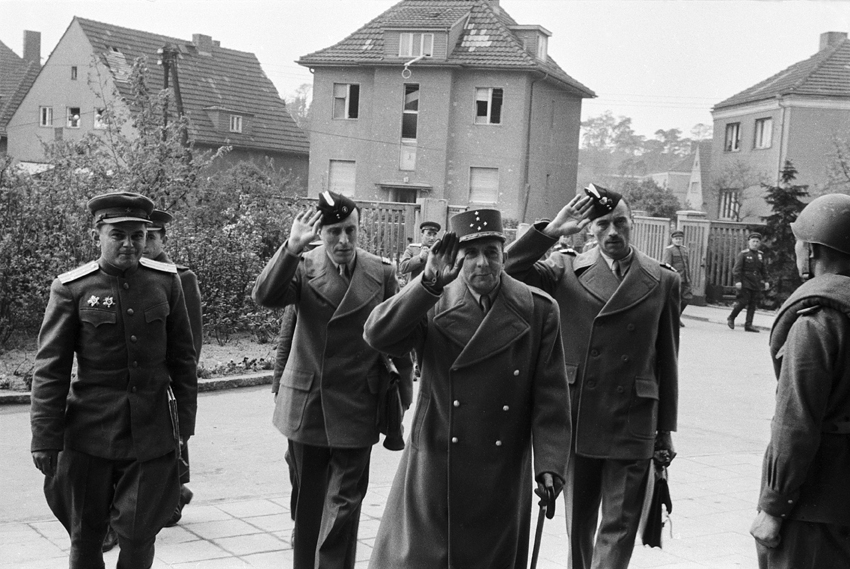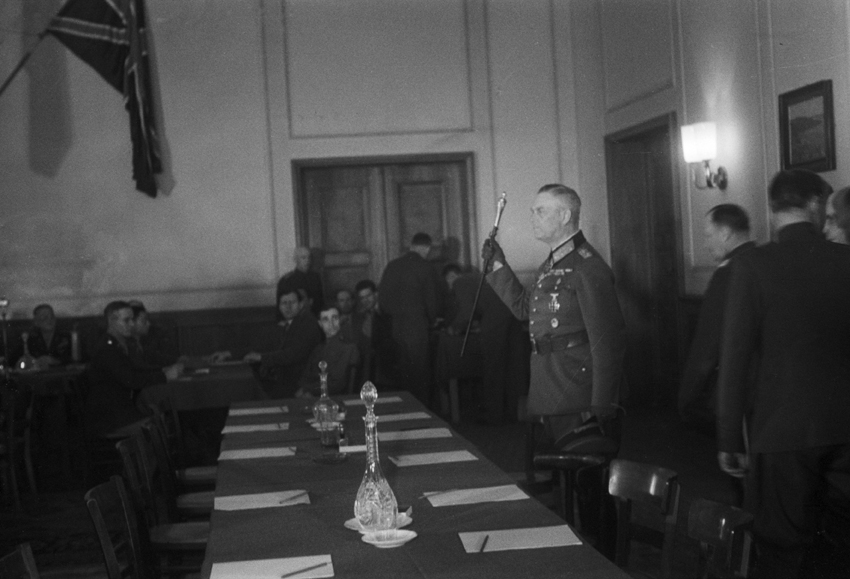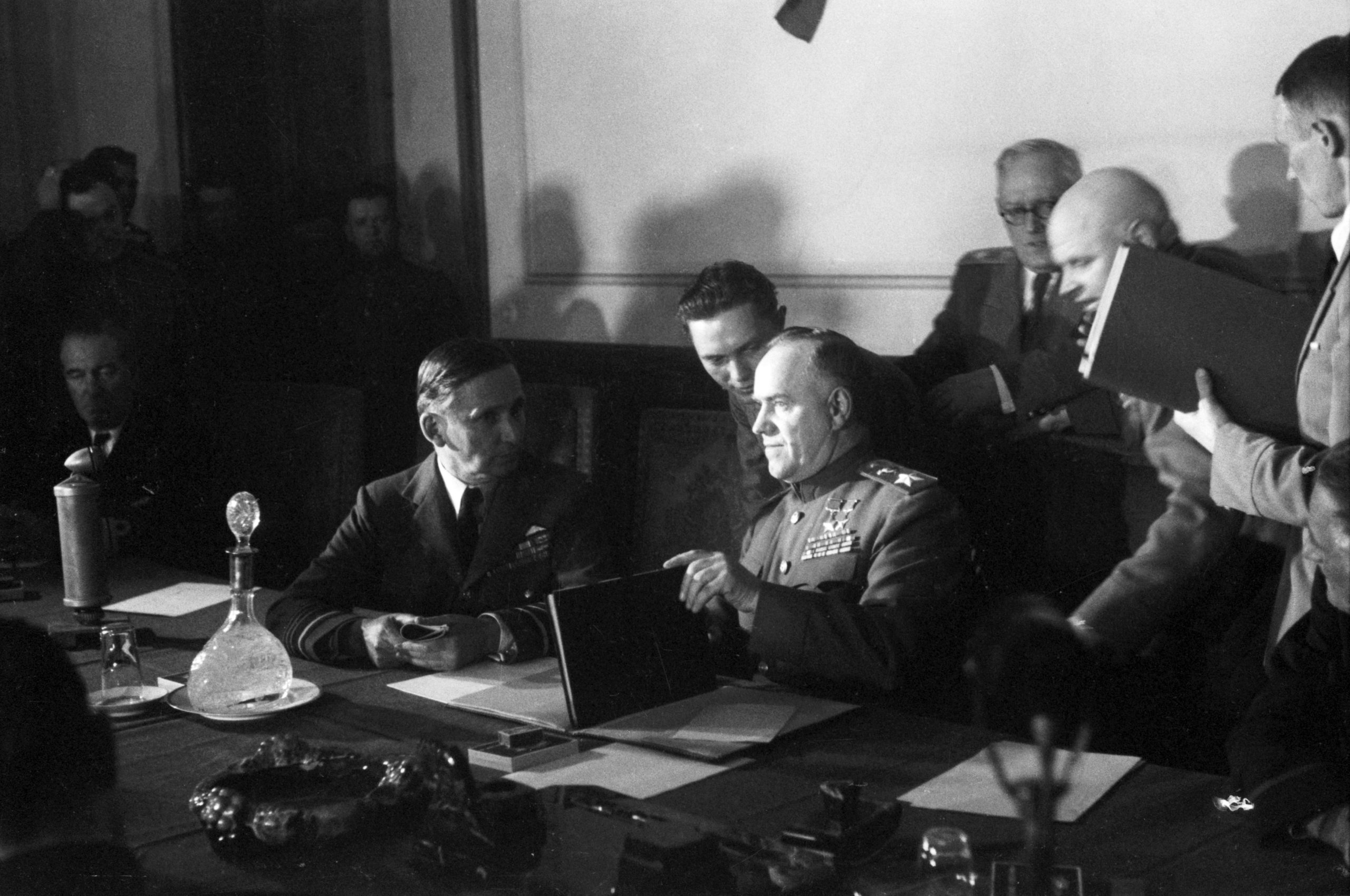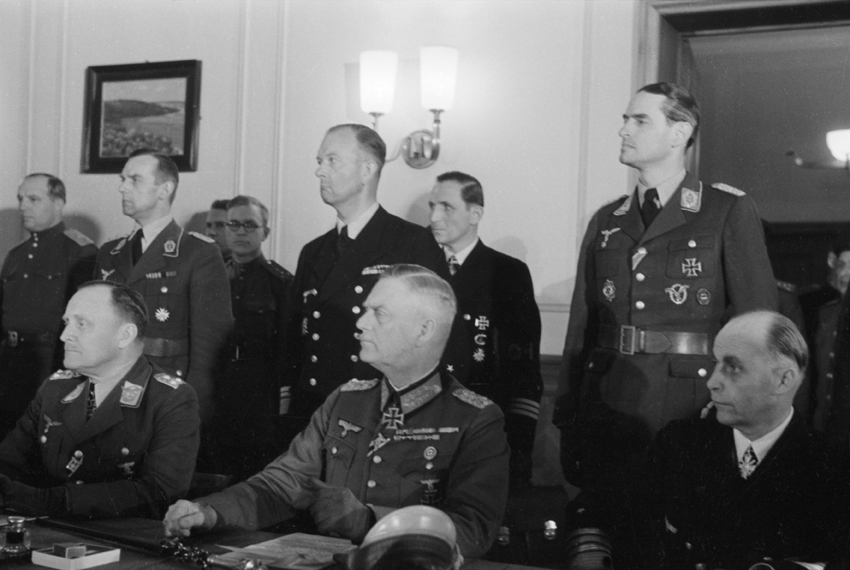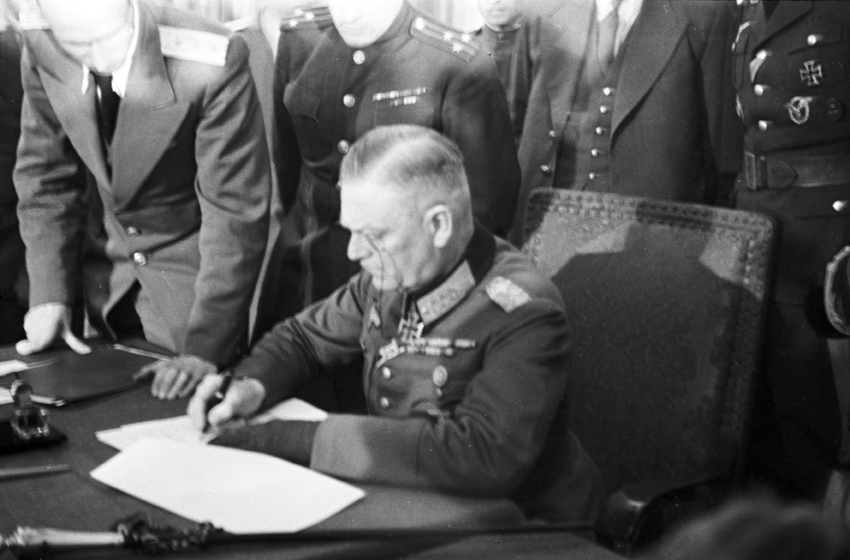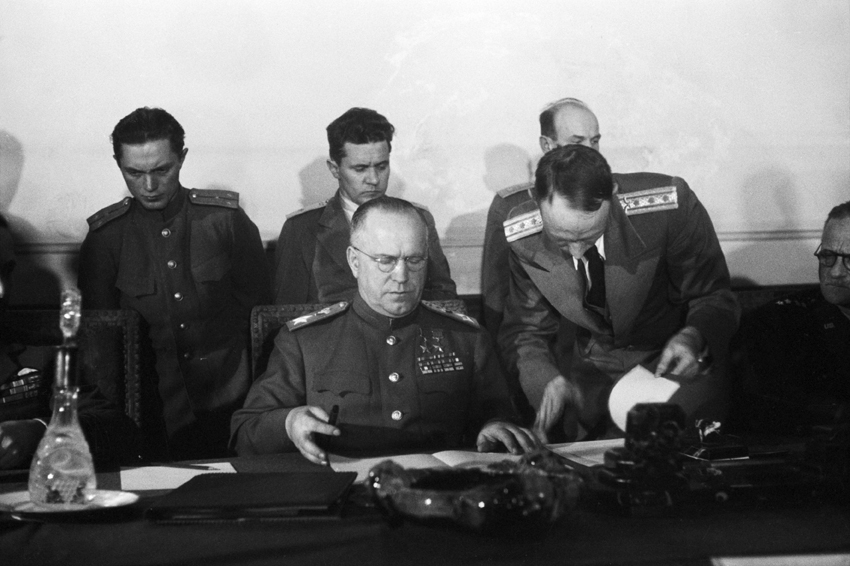The historic location

The hall of surrender in today´s museum building © Museum Berlin-Karlshorst | Harry Schnitger
Site of the end of the Second World War in Europe
Today’s museum building in Berlin-Karlshorst is a place of world historical significance: here, on the night of May 8-9, 1945, the supreme commanders of the Wehrmacht signed the unconditional surrender before representatives of the Soviet Union, the United States, Great Britain and France. This followed the declaration of surrender on May 7 at U.S.-British headquarters in the French city of Rheims. The joint victory of the anti-Hitler coalition was sealed with the ratification of the surrender by the signatures of the commanders-in-chief of the Wehrmacht and its branches of the armed forces at the Soviet headquarters in Berlin-Karlshorst. It marked the end of the Second World War in Europe.
Constructed in the late 1930s as an officers’ mess for the Wehrmacht, the building was the seat of the head of the Soviet military administration in Germany from 1945 to 1949. After different uses by the Soviet military, it housed the “Museum of the Unconditional Surrender of Fascist Germany in the Great Patriotic War 1941-1945” from 1967 to 1994.
With the decision to withdraw Soviet troops from Germany in 1990, the continued existence of the museum was unclear. Representatives of both governments agreed on the preservation of the museum site and from 1991 a German-Soviet, later German-Russian expert commission worked out a concept for a new permanent exhibition. The new museum finally opened on 10 May 1995, the 50th anniversary of the end of the World War II in Europe.
More information |
|
